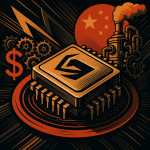Key Points
- Pinduoduo (Pinduoduo 拼多多) rose by challenging market leaders focusing on lower-tier cities and rural areas overlooked by rivals.
- Its core strategy is the Consumer-to-Manufacturer (C2M) model, connecting buyers directly with factories to achieve significantly lower prices.
- Pinduoduo thrives on social commerce and group buying, using features like “team purchase” shared via WeChat (Weixin 微信) to acquire users and drive sales virally.
- The platform keeps users engaged with features like gamification (Duo Duo Orchard 多多果园), livestreaming, and a focus on fresh produce, blending shopping with entertainment.
- Pinduoduo has expanded internationally with Temu, applying its successful low-price, direct-sourcing, and aggressive marketing playbook to global markets.
Okay, let’s talk about Pinduoduo (Pinduoduo 拼多多), or PDD as it’s often called.
This company exploded onto the scene, shaking up the Chinese e-commerce world dominated by giants like Alibaba (Alibaba 阿里巴巴) and JD.com (Jingdong 京东).
How did they do it?
It boils down to a unique blend of understanding overlooked markets, leveraging social connections, and flipping the traditional manufacturing model on its head.
If you’re into tech, investing, or just fascinating business models, you need to understand the PDD phenomenon.
Let’s dive into the core strategies that fueled Pinduoduo’s meteoric rise and its move into international markets with Temu.
Challenging the Titans: PDD’s Disruption Story
Think about the e-commerce landscape before PDD.
You had Alibaba’s Taobao and Tmall, and the premium-focused JD.com.
They seemed unbeatable.
Then came Pinduoduo, founded by Colin Huang (Huang Zheng 黄峥), a savvy ex-Googler.
Launched in 2015, PDD didn’t just compete; it carved out a massive space by focusing on a different customer base and a different way of shopping.
Their growth was staggering, quickly amassing hundreds of millions of users.
This wasn’t just luck; it was a calculated strategy targeting China’s often-ignored lower-tier cities and rural areas.
While Alibaba, under figures like Jack Ma (Ma Yun 马云), initially focused on urban centers, PDD saw opportunity elsewhere.

The C2M Revolution: Connecting Consumers Directly to Factories
At the heart of PDD’s magic is the Consumer-to-Manufacturer (C2M) model.
What’s C2M?
Simply put, it connects buyers *directly* with manufacturers.
This cuts out many of the traditional middlemen – distributors, wholesalers, retailers – that add markups at each step.
Here’s how Pinduoduo leverages C2M:
- Aggregated Demand: PDD uses its platform to group customer orders for specific products.
- Direct Factory Orders: This large, aggregated demand is sent straight to the factory.
- Lower Production Costs: Factories get predictable, large orders, allowing them to optimize production runs and reduce costs.
- Lower Prices for Consumers: The savings from cutting out middlemen and achieving manufacturing efficiencies are passed directly to the shoppers.
- Data Feedback Loop: PDD provides manufacturers with insights into consumer preferences based on real-time demand, allowing factories to better tailor products.
This C2M approach allows PDD to offer incredibly low prices, a key factor in its appeal, especially to price-sensitive consumers.
It’s a win-win: consumers get bargains, and manufacturers get volume and data.

Find Top Talent on China's Leading Networks
- Post Across China's Job Sites from $299 / role
- Qualified Applicant Bundles
- One Central Candidate Hub
Your First Job Post Use Checkout Code 'Fresh20'

Social Commerce & Group Buying: Making Shopping Viral
PDD isn’t just cheap; it’s *social* and even *fun*.
A core feature is the “team purchase” or group buying model.
Here’s the breakdown:
- Find a Deal: You see a product you want on PDD.
- Initiate a Team Purchase: You can buy it instantly at a standard (still low) price, OR you can start a “team purchase” to get an even bigger discount.
- Share and Recruit: To get the lower team-purchase price, you need to recruit others (friends, family) to join your buying team within a specific timeframe (usually 24 hours).
- Leveraging WeChat: This sharing happens heavily through WeChat (Weixin 微信), China’s ubiquitous super-app. A simple share links directly to the PDD deal.
- Viral Loop: When friends join, they might see other deals and start their own teams, creating a viral user acquisition and sales loop.
This model turns shopping from a solitary activity into a social, slightly gamified experience.
It taps into existing social networks for distribution and customer acquisition, drastically reducing marketing costs compared to traditional methods.

ExpatInvest China
Grow Your RMB in China:
- Invest Your RMB Locally
- Buy & Sell Online in CN¥
- No Lock-In Periods
- English Service & Data
- Start with Only ¥1,000

Winning the Underserved: Dominance in Lower-Tier Cities
PDD’s initial genius was recognizing the immense potential outside of China’s major metropolises like Beijing and Shanghai.
They focused intensely on lower-tier cities and rural areas.
Why this worked:
- Price Sensitivity: Consumers in these regions are generally more price-conscious. PDD’s ultra-low prices, enabled by C2M, were a perfect fit.
- Mobile-First Population: Many residents skipped the PC era and went straight to smartphones. PDD’s mobile-centric, easy-to-use app catered directly to this behavior.
- Social Structures: Tighter-knit communities made the “team purchase” model spread rapidly through existing social connections on platforms like WeChat.
- Market Opportunity: Alibaba and JD.com had less penetration in these areas initially, leaving a gap for PDD to fill.
By tailoring its product selection (everyday goods, agricultural products) and pricing strategy to this demographic, PDD built a loyal and massive user base where competitors were weaker.
- Focused tailoring of product selection (everyday goods, agricultural products).
- Pricing strategy specifically designed for price-sensitive consumers.
- Mobile-first app design suitable for populations who skipped PCs.
- Leveraging strong existing social connections for viral growth.
- Exploiting market gaps left by initial focus of competitors on urban centers.

Resume Captain
Your AI Career Toolkit:
- AI Resume Optimization
- Custom Cover Letters
- LinkedIn Profile Boost
- Interview Question Prep
- Salary Negotiation Agent

Beyond Price: The Pinduoduo Engagement Ecosystem
While low prices are the hook, PDD keeps users engaged through more than just deals.
They’ve built an ecosystem designed for interaction:
- Gamification: Features like Duo Duo Orchard (多多果园) allow users to “grow” virtual fruit trees by completing actions on the app (browsing products, making purchases, inviting friends). Once the virtual tree bears fruit, the user receives a box of real fruit, free. This drives daily active usage and engagement.
- Livestreaming: Like other Chinese platforms, PDD incorporated livestreaming, allowing merchants (often farmers or factory owners directly) to showcase products interactively.
- Focus on Agriculture: PDD made a significant push into fresh produce, connecting farmers directly with consumers via the C2M and group buying models, addressing inefficiencies in China’s traditional agricultural supply chain.
- Deals and Coupons: Constant promotions, flash sales, and coupons keep users coming back. For example, hitting certain spending thresholds like ¥1,000 RMB ($140 USD) might unlock further discounts or rewards, encouraging larger basket sizes or repeat purchases.
This blend of shopping and entertainment creates a “stickier” platform experience than traditional e-commerce sites.

Temu: Taking the PDD Model Global
Riding on its domestic success, PDD launched its international platform, Temu, initially targeting the US market in late 2022.
Temu essentially applies the core Pinduoduo playbook to a global audience:
- Leveraging C2M: Connecting international consumers directly with Chinese manufacturers.
- Aggressive Pricing: Offering rock-bottom prices by cutting out middlemen and subsidizing costs.
- Heavy Marketing: Investing significantly in online advertising (Meta, Google) and influencer marketing to acquire users rapidly.
- Wide Selection: Offering a vast array of goods, similar to platforms like SHEIN or AliExpress.
Temu saw explosive growth in app downloads, quickly topping charts.
It brings the PDD model of extreme value, direct sourcing, and aggressive market penetration to the rest of the world, challenging established players like Amazon and Wish.
Key Takeaways: The Pinduoduo Formula

- Consumer-to-Manufacturer (C2M) for cost-efficiency.
- Social commerce and group buying for viral growth.
- Targeting and dominance in lower-tier cities and rural markets.
- Building a ‘sticky’ platform with gamification and content.
- Successful international expansion via Temu.
Pinduoduo’s rise isn’t accidental. It’s a masterclass in strategic execution.
Here’s the essence:
- C2M is Powerful: Directly connecting consumers and manufacturers unlocks huge value and cost savings.
- Social Commerce Works: Leveraging existing social networks for discovery and acquisition is incredibly effective.
- Know Your Niche: Targeting underserved markets (like lower-tier cities) can yield massive returns.
- Engagement Matters: Combining shopping with entertainment and gamification drives loyalty and usage.
- Adapt and Expand: Successfully applying a proven domestic model (PDD) to international markets (Temu).
Understanding the Pinduoduo (Pinduoduo 拼多多) model offers crucial insights for anyone in e-commerce, tech, or investment, showcasing how innovation in business models can disrupt even the most entrenched markets.
References
[Note: Please ensure all original source links provided are listed here accurately.]
[Link 1]
[Link 2]
[Link 3]
… etc.


![China's STAR Market Chip Gear Makers Ride AI Wave: Q1 Revenue Up, R&D Soars [FreshFromChina]](https://freshfromchina.com/wp-content/uploads/2025/05/Chinas-STAR-Market-Chip-Gear-Makers-Ride-AI-Wave-Q1-Revenue-Up-RD-Soars___FreshFromChina-150x150.png)

